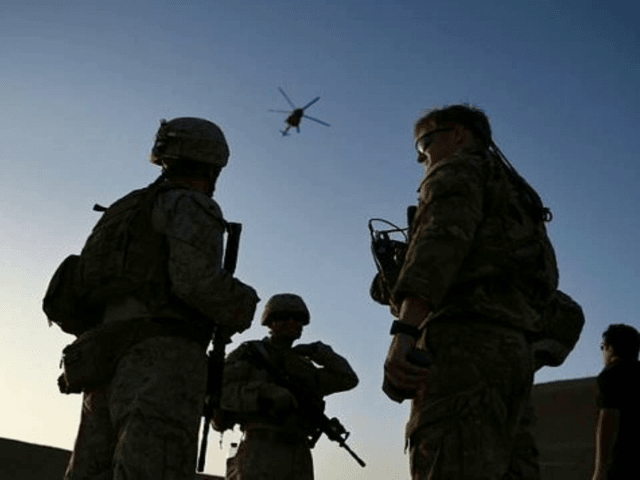The number of American troops fighting jihadists and training their Afghan counterparts to secure their own country has reached “approximately 14,000,” boosting the overall U.S.-NATO military footprint to more than 20,000, affirmed Lt. Gen. Kenneth McKenzie, the Director of the Joint Staff (DJS).
In an apparent effort under former U.S. President Barack Obama’s administration to minimize the U.S. involvement in Afghanistan, the Pentagon repeatedly claimed there were only about 8,400 United States troops in the war-ravaged country—instead of the 11,000 there.
As part of U.S. President Donald Trump’s Afghanistan strategy announced in late August, about 3,000 military American service-members have deployed to Afghanistan, bringing the total number to 14,000, a figure that a top American general confirmed when briefing reporters last week, reports Radio Free Europe/Radio Liberty (RFE/RL).
Gen. McKenzie explains to Pentagon reporters:
In Afghanistan, the number we’ve been working with has been approximately 11,000. As you know, we’ve just completed a force flow into Afghanistan, so the new number for Afghanistan is now approximately 14,000; might be a little above that, might be a little below that as we flex according to the mission.
But with the additional forces that the commander has identified as needed and that the secretary and the president have approved, the new approximate number for Afghanistan is 14,000.
NATO recently agreed to deploy about 3,000 additional non-combat troops to solely focus on training the ANDSF, bringing the overall number of U.S. allied troops to nearly 9,500.
Moreover, the Associated Press (AP) recently revealed the Trump administration is expected to increase the U.S. military presence by a few hundred U.S. Army trainers next year—to nearly 16,000 as part of his strategy.
The size of the force—including Americans, NATO members, other international partners—may reach an estimated 25,000 next year.
Yet echoing other military officials, American Gen. John Nicholson, the top commander of U.S. and NATO troops in Afghanistan, has indicated that the troop levels are not sufficient to defeat the Islamic State (ISIS/ISIL) and tame the Taliban into a peace agreement as part of Trump’s South Asia strategy.
Cmdr. Nicholson has requested additional troops to successfully implement Trump’s strategy, which he says is primarily “determined” to train the police and military units of the ANDSF to push the Taliban into reconciliation and a political settlement with the Kabul government by convincing the reluctant jihadists that they cannot win.
Victory under the Trump plan is mostly contingent upon a reliable and efficient ANDSF, which suffers from capability lapses despite the nearly $70 billion the U.S. has invested to develop the force.
The Afghan troops have shown a willingness to fight, suffering “over twice” the number of U.S. military casualties.
When announcing his Afghanistan strategy, President Trump stressed the ANDSF would be on the front lines.
Besides counterterrorism operations against the growing ISIS jihadists, the unrelenting Taliban fighters, as well as their al-Qaeda and Haqqani Network allies, the additional U.S.-NATO troops are expected to train the ANDSF to ultimately fight independently of assistance.
The lucrative multi-billion trade of opium and its heroin derivative, the Taliban’s primary source of funding, has largely fueled the unprecedented level of the group’s strength, allowing the jihadists to control more territory now than during any other time since the U.S. military overthrew its regime in 2001.

COMMENTS
Please let us know if you're having issues with commenting.